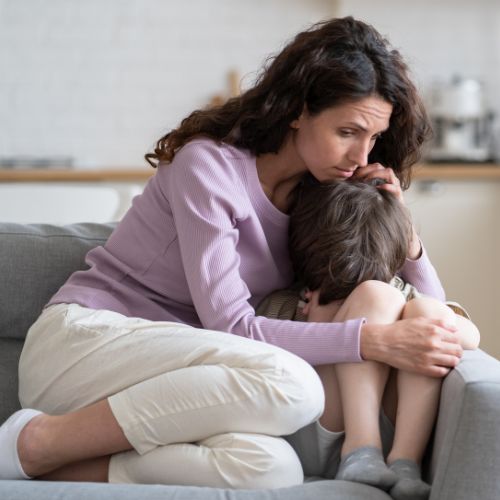How Children’s Grief Styles Often Mirror the Four Grief Personas
When a child experiences the death of a loved one, the grief can show up in ways that adults might overlook. Some kids cry openly. Some ask blunt questions. Others throw themselves into schoolwork or play. And many retreat into themselves completely.
The Grief Personas framework, originally developed to help adults better understand how people process loss, can also be a helpful lens for noticing patterns in children’s grief. Kids may not yet have the emotional vocabulary of adults, but their coping styles often echo the same four personas: The Open Heart, The Steady Hand, The Seeker, and The Quiet Anchor.
Recognizing these patterns can help parents, teachers, and caregivers respond with compassion and clarity.
Why It Helps to Name a Child’s Grief Style
Children are often expected to be “resilient,” but the truth is they grieve deeply and sometimes silently. Just like adults, they benefit from being seen and supported in the way they naturally process.
Identifying a child’s grief persona is not about labeling. It is about tuning in. When a child feels understood, they are more likely to feel safe, express themselves honestly, and build healthy coping tools that will serve them for life.
How the Grief Personas Might Show Up in Kids
The Open Heart Child
- Cries easily, asks for hugs or comfort
- Talks openly about missing the person who died
- May want to draw, sing, or write about their feelings
- Needs emotional connection and reassurance
How to support them:
Let them talk without rushing to fix. Offer gentle questions like “Do you want to tell me a story about them?” or “Would you like to make something together that reminds you of them?”
The Steady Hand Child
- Keeps busy with tasks or school
- Focuses on order, routines, or helping the adults
- May seem more mature than expected
- Avoids emotional conversations
How to support them:
Acknowledge their effort: “You’ve been helping a lot. That means a lot to everyone.” Then ask, “Would it be okay if we talked about how you’re feeling too?” Give them outlets like organizing a photo album or planning a memorial detail.
The Seeker Child
- Asks big questions like “Why do people die?” or “Where do they go?”
- Wants to understand what happened in logical or spiritual terms
- Reads or thinks about death a lot
- May seem emotionally detached at first
How to support them:
Let them explore. Share age-appropriate books or talk about beliefs. Say, “That’s a really big question. What do you think?” Let the conversation be open-ended and thoughtful.
The Quiet Anchor Child
- Withdraws or spends time alone
- May not bring up the loss unless prompted
- Avoids emotional conversations
- Grieves through quiet play, drawing, or repetitive routines
How to support them:
Do not push them to talk. Instead, offer presence. Say, “I’m always here if you want to talk. You don’t have to.” Offer quiet togetherness, such as sitting nearby while they play or going on a walk in silence.
Can a Child Show More Than One Persona?
Yes. Just like adults, children can shift between styles depending on the day, the setting, or who they’re with. A child who is an Open Heart at home might become a Quiet Anchor at school. That flexibility is normal and healthy.
Final Thought
The goal is not to fit kids into boxes. It is to help us pay closer attention to how they are coping. When children are met with understanding, not just rules or routines, they learn that grief is not something to hide or get over. It is something they are allowed to feel in their own way.
If you’re supporting a grieving child, consider asking:
“How are you feeling today?”
“Do you want to talk, do something, or just be quiet together?”
Even if they don’t answer, the invitation matters.
 Restfully
Restfully 

